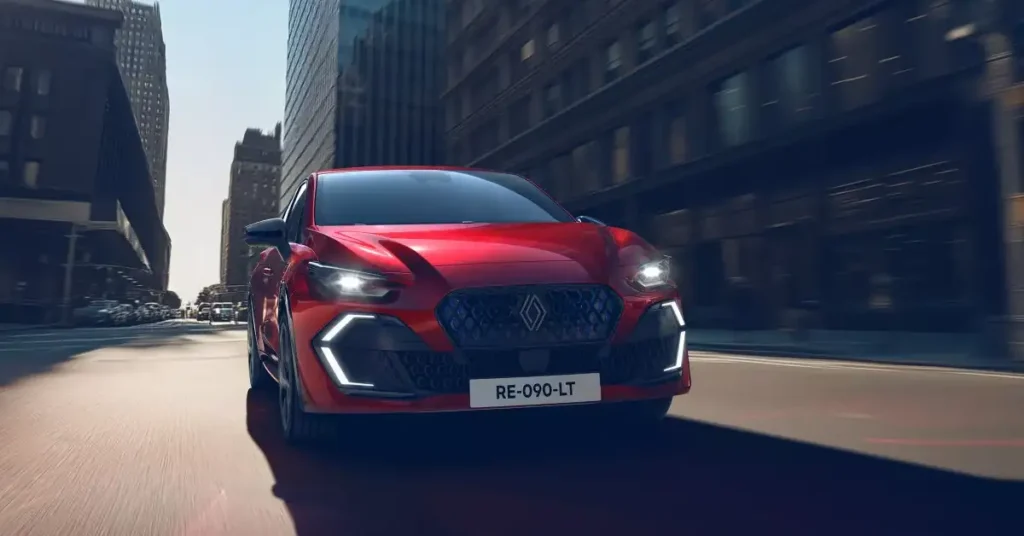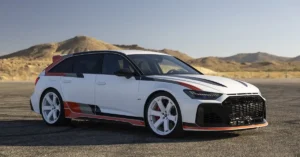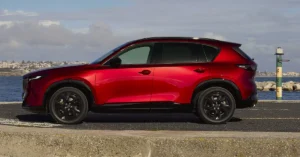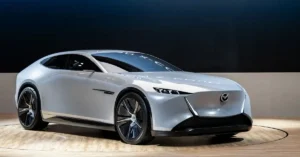(Image Source: Media Renault)
Some cars are dependable. Others are unforgettable. And then there’s the Renault Clio a car that’s quietly shaped Europe’s roads for 35 years. It’s never been about loud exhausts or oversized badges. Instead, the Clio has built a reputation for being smart, spirited, and incredibly well put together. And now, for 2025, Renault has turned the dial all the way up. The new Renault Clio isn’t just a refreshed hatchback it’s a statement. It’s sharper to look at, cleaner to drive, and packed with more tech than ever before.
But how does it manage to stay relevant in an era dominated by SUVs and EVs? Let’s take a closer look at how Renault’s small hatch continues to punch above its weight.
A Legacy Reborn: 35 Years of Setting the Benchmark
Back in 1990, when the first Clio rolled off production lines, Renault wasn’t just launching another compact car. It was redefining what a small hatch could be. At a time when cars in this category were mostly basic and utilitarian, the Clio arrived with something new the refinement and features of a bigger car, shrunk into a city-friendly package.
Over five generations, it’s won just about everything worth winning, including European Car of the Year in both 1991 and 2006. It’s been Renault’s best-seller across 120 countries, with 17 million units sold worldwide. Today, it still dominates the best-selling car in Europe in the first half of 2025.
Renault’s CEO Fabrice Cambo live summed it up perfectly: “When you think Clio, you think Renault and when you think Renault, you think Clio.”
At its Bursa plant in Turkey, Renault now builds over 1,000 Clios every single day, proof that the nameplate remains as relevant as ever. Publications like Top Gear and Autocar have often called it “the benchmark for what a small hatch should be” and the sixth generation aims to keep it that way.
Design Evolution: Sportier, Sharper, and Smarter
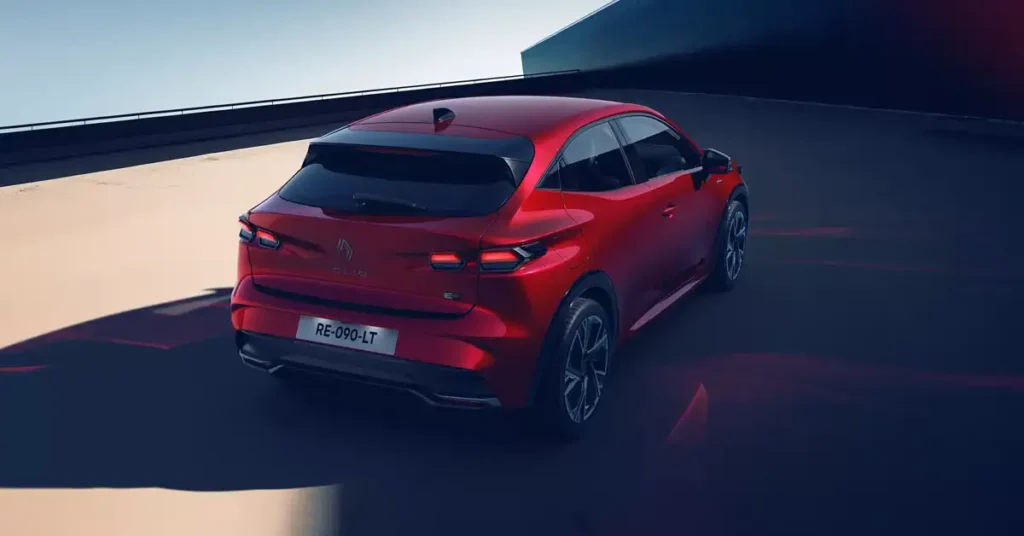
(Image Source: Media Renault)
The new Clio looks like it’s been through an intensive gym routine. It’s leaner, tighter, and more technical, yet still carries the classic French flair that made it iconic. Renault’s designers have gone for a “sensual precision” look combining sculpted curves with a more assertive front end and those striking C-shaped LED headlights that now define Renault’s design language.
Design highlights:
- Aggressive new stance with wider haunches and stronger lines
- Reworked LED matrix headlights and bold Renault emblem
- Cabin built using recycled materials with premium textures
Inside, the transformation continues. The use of recycled materials doesn’t just tick the sustainability box it actually elevates the cabin’s quality. Soft-touch surfaces, better ergonomics, and modern lighting make the interior feel closer to a mini luxury car.
As AutoExpress UK notes, “The Clio now punches far above its class when it comes to materials and comfort.”
Under the Hood: Hybrid Power Meets Real-World Efficiency
Renault has gone all in on hybrid tech. The new E-Tech full hybrid 160 hp setup is the most powerful yet for a Clio, combining a 1.6-litre petrol engine with an electric motor and a compact 1.2 kWh lithium-ion battery.
What makes it special is how naturally it drives. There’s no awkward switching between petrol and electric it just flows. The system uses Formula 1-inspired energy recovery tech, capturing power during braking and reusing it for acceleration.
Powertrain highlights:
- 160 hp combined output
- 89 g/km CO₂ emissions
- 3.9 L/100 km fuel consumption
- Up to 80% of urban driving on electric power
With fuel savings of up to 40% compared to a conventional petrol engine, this Clio doesn’t just talk green it delivers it.
Expected Price: Between USD 24,000 and 28,000, depending on trim.
According to Car Magazine UK, Renault’s hybrid system is “one of the smoothest and most efficient in the business,” striking an ideal balance between everyday usability and cutting-edge engineering.
Inside the Cabin: Tech You Can Actually Use
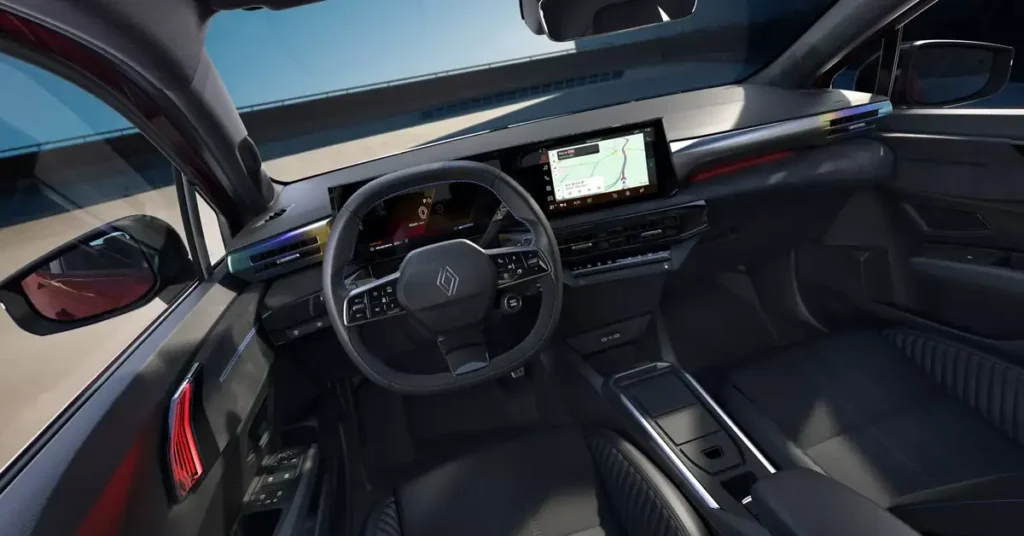
(Image Source: Media Renault)
Some carmakers cram screens everywhere just because they can. Renault, on the other hand, has focused on making tech that works with you not against you. The centrepiece is a dual “V-shaped” screen layout powered by the OpenR Link multimedia system with Google built-in.
Interior and Tech Highlights:
- Google Assistant, Maps, and Play Store fully integrated
- Over-the-air software updates for continuous improvement
- Up to 29 advanced driver-assistance systems (ADAS)
That means your Clio can handle adaptive cruise control, lane centring, and automatic parking all in a compact hatchback. The interface feels intuitive, fluid, and more connected than most rivals in the same bracket.
It’s less about showing off and more about quietly making every drive smoother and safer.
The Hatchback Identity Crisis Solved
Here’s the truth: small hatchbacks have been under threat for years. Crossovers have stolen the spotlight with their raised ride heights and flashy styling. But that also means they’ve become heavier, thirstier, and more expensive.
The problem: Drivers want practicality and tech, but don’t want to sacrifice fun or affordability.
The frustration: Rivals like the Ford Fiesta or Peugeot 208 often lean one way either sporty or efficient rarely both.
The solution: Renault didn’t try to make the Clio something it’s not. Instead, it refined everything that made it great agility, affordability, and design and added hybrid sophistication.
The result is a small car that feels complete again. It’s not fighting to stay relevant; it’s leading the way.
Clio vs The Competition
| Model | Power Output | Fuel Economy | CO₂ Emissions | Cabin Tech | Price (USD) |
| Renault Clio E-Tech 160 | 160 hp | 3.9 L/100 km | 89 g/km | OpenR Link, Google built-in, 29 ADAS | 24,000–28,000 |
| Peugeot 208 Hybrid | 150 hp | 4.1 L/100 km | 94 g/km | i-Cockpit, basic ADAS | 25,000–27,000 |
| Ford Fiesta Hybrid | 155 hp | 4.3 L/100 km | 97 g/km | SYNC 4, fewer driver aids | 24,500–26,500 |
| Toyota Yaris Hybrid | 130 hp | 3.8 L/100 km | 87 g/km | Toyota Smart Connect | 25,000–28,500 |
The numbers tell their own story. The Clio sits right in the sweet spot the most balanced combination of power, emissions, and connectivity in the segment.
Key Technical Data Sheet
| Specification | Details |
| Powertrain | E-Tech full hybrid 1.6 L petrol engine + electric motor |
| Output | 160 hp |
| Transmission | Multi-mode automatic |
| CO₂ Emissions | 89 g/km |
| Fuel Economy | 3.9 L/100 km |
| 0–100 km/h | ~9 seconds (estimated) |
| Battery | 1.2 kWh lithium-ion |
| Boot Capacity | 301 litres |
| Weight | Approx. 1,250 kg |
| Production | Bursa, Turkey |
| Price Range | USD 24,000–28,000 |
FAQs
Is the 2025 Clio a full hybrid?
Yes. It can drive short distances in pure electric mode, making it ideal for city commutes without plug-in hassle.
Will it be available in the UAE?
Renault’s hybrid expansion is ongoing, with Middle East availability expected in late 2026.
How does it compare to the upcoming Renault 5 EV?
The Clio hybrid offers efficiency without charging infrastructure concerns, while the 5 EV caters to full-electric enthusiasts.
Is it expensive to maintain?
Not at all. The hybrid powertrain needs regular servicing, but Renault’s proven reliability makes upkeep affordable.
Stay connected with MotorHub for the latest updates in automotive technology, hybrid service tips, and EV-ready maintenance solutions tailored for UAE drivers.
